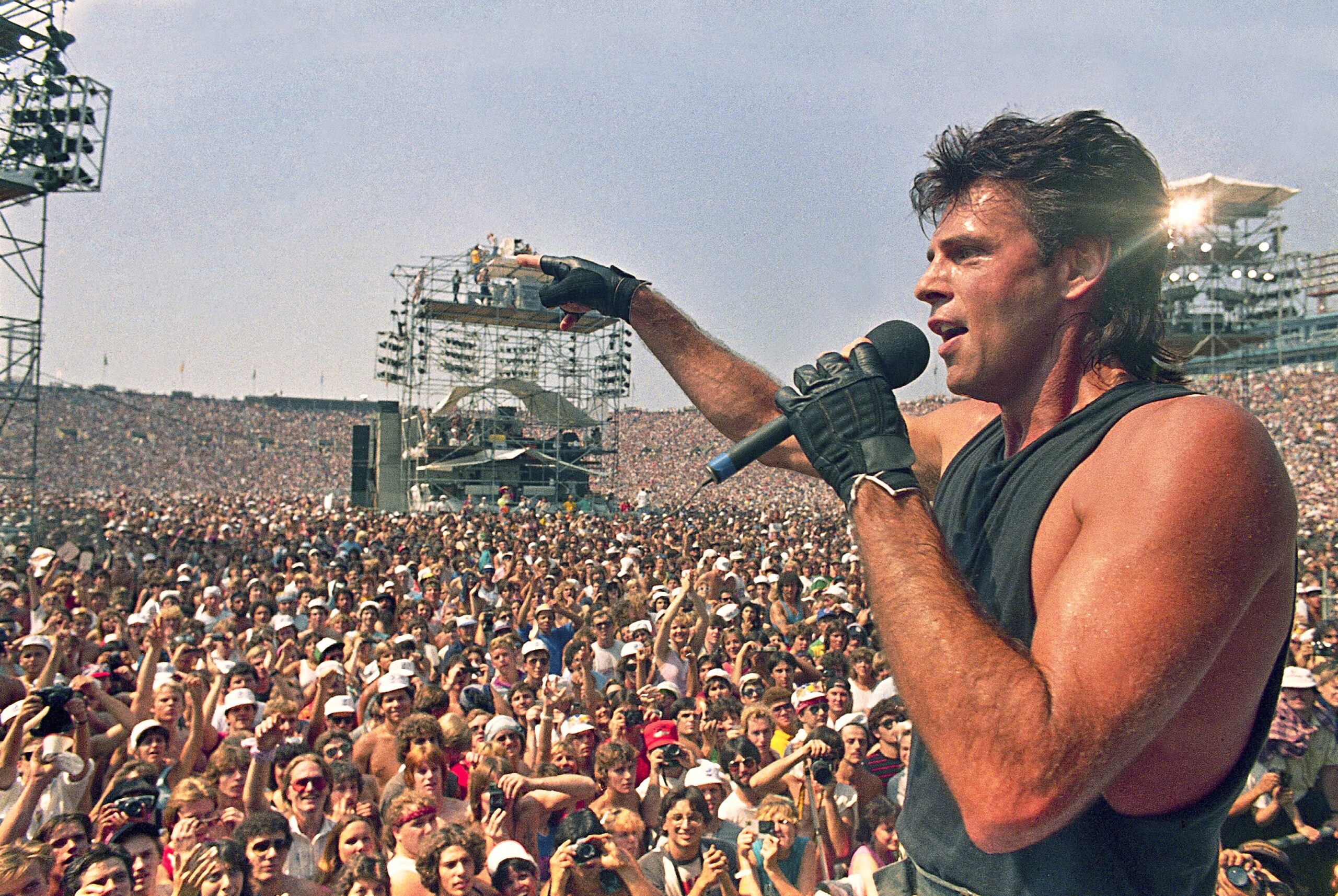NEW YORKThe iconic Live Aid performances forty years ago sought to generate more than $100 million for Ethiopian famine assistance and to increase global awareness of a cause that might otherwise have gone unnoticed.
The most ambitious international television event of its time, Live Aid was broadcast simultaneously from Philadelphia and London on July 13, 1985. It featured 16 hours of live music on two continents, including a reunion of Led Zeppelin, Queen, and The Who.
Since then, a lot has changed. Rick Springfield remarks, chuckling, “Live Aid from 1985 to now is the same distance as the Second World War from Live Aid.” That was a long time ago.
In interviews with The Associated Press prior to the 40th anniversary on Sunday, performers at Live Aid Springfield, organizer Bob Geldof, John Oates of Hall and Oates, and Rob Halford of Judas Priest discussed the event and its effects.
What they said was as follows:
Thoughts about a historic occasion
Springfield’s performance at Philadelphia’s John F. Kennedy Stadium, sandwiched between Run-DMC and REO Speedwagon, is just one example of the variety of artists on the international roster. I recall asking myself, Run-DMC, what is this? Over a record player, three men are conversing. What is that? He laughs and says, “I had no idea that it was going to alter the entire game.” Since it was my first success at the time, he recalls playing an electrifying set without Jessie’s Girl. It hadn’t developed into this cultural phenomenon.
John Oates of Hall and Oates experienced things differently. His band was among the largest in the world in 1985, and they performed in their hometown of Philadelphia as well. Together with Eddie Kendricks and David Ruffin of the Temptations, they performed near the conclusion of the evening and stayed on stage to support Mick Jagger, the dynamic leader of the Rolling Stones.The rock star from Britain had a secret.
According to Oates, he didn’t inform us that he was bringing Tina Turner out. With him, we had practiced a number of tunes. However, the intensity level was so much higher when he brought her out that it was unbelievable.
Naturally, Rob Halford, the frontman of Judas Priest, lists Mike and Tina as one of his favorite moments from Philly Live Aid. also led Zeppelin.
But what excites the heavy metal frontman the most? Introducing Joan Baez, a folk hero.Her popular song Diamonds and Rust had already been covered by the band.
He remembers, “Oh my God, I thought she was going to come and kick me in the ass for ruining her beautiful song.” I’m here because my kid said me, ‘If you see Rob Halford from Judas Priest at the Live Aid Show in Philadelphia, will you tell him from me that I prefer Judas Priest’s version to my mom’s version?’ It was a very lovely gesture, she says, giving me a quick hug.
Live 8 and beyond, from Live Aid
Twenty years after Live Aid, Geldof created Live 8, a much bigger event in the new internet era that featured ten simultaneous concerts all around the world.
There ought to be another occurrence this year if the pattern holds true. Interestingly, it doesn’t.
According to Geldof, this is because a Live Aid-style event would not be possible in 2025. He attributes this to social media. He believes that the creation of monolithic musical and activistic moments has become unachievable due to algorithmic fragmentation. Rather, he believes that the media environment of today reinforces “an echo chamber of your own prejudices.”
“You need rock ‘n’ roll as a product of a social, economic, and technological movement for something like Live Aid to succeed,” he argues. Additionally, I believe that the rock and roll era is ended. It did influence how young people expressed their desire for change. That is no longer the case.
Springfield concurs. He says, “I believe we are too divided.” He thinks that everyone would be unable to agree on a single cause or even which performers to support. A project the size of Live Aid could never be carried out unless it was a worldwide initiative that brought people together.
Oates adds, “Never say never, but I highly doubt it.” The entertainment and music industries have seen significant upheaval.
As an example, he cites the 1985 charity song “We Are The World,” which featured the vocals of Michael Jackson, Willie Nelson, Bob Dylan, Ray Charles, Diana Ross, Stevie Wonder, Smoky Robinson, Paul Simon, and many more, to raise money for famine relief in Africa. I can’t even fathom the possibility of that occurring with today’s stars gathered in one location. How many songs are released each day? Moreover, who would they be?
Wishing for the legacy of Live Aid to endure
Halford agrees with the other person. He claims that because of the unquestionable extremism in the world now, it would be difficult to organize a Live Aid event in 2025. However, he does not believe it is impossible. He cites the recent Fire Aid the LA wildfire benefit concert in January, which included a reunion of Nirvana, Stevie Wonder, and Billie Eilish.
People will always be sympathetic, and with the right leadership, perhaps another Live Aid-style event could happen. We were given the chance to do something to help because it was such a lovely humanitarian example.
